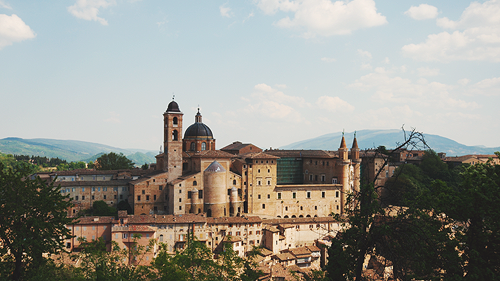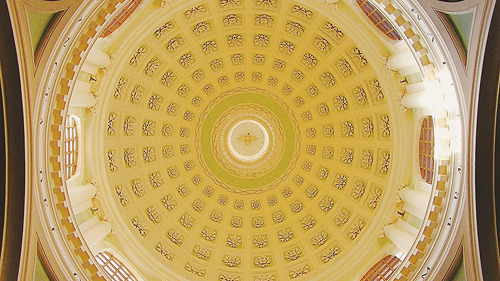princely estates: palazzo ducale, urbinoBuilt in the mid-fifteenth century by the Dalmatian architec
princely estates: palazzo ducale, urbinoBuilt in the mid-fifteenth century by the Dalmatian architect Luciano Laurana (among many other prominent architects of the era, including Alberti, and later, Bramante) for the Duke Federico da Montefeltro, the Ducal Palace of Urbino was, at the time of its construction, the most modern palace in Italy, with its towers, perfectly round arches and courtyards surrounded by columns of white stone. Lorenzo the Magnificent himself had asked for the copy of the reliefs, while Ludovico Gonzaga of Mantua ordered for a detailed survey of the building. But no one could have imitated the light that flooded the palace from numerous courtyards on different levels, or the way it enhanced the ivory-coloured relief carvings.Perched on the hill, the palace had transformed the entire city of Urbino into a court. Set in a radically different scenario compared to the Palazzo Medici in Florence (which had become a model for all similar schemes of the era), the palace was conceived as a symbol and instrument of family continuity, and represented the city’s renaissance and housed its fruits. With its spacious courtyards (built on the detailed designs by Leon Battista Alberti, as an homage to Brunelleschi and principles of early Florentine Renaissance), the palace conjured up its own beauty while retaining the rules and laws of classical architecture. The palace was filled with fashionable paintings by the leading artists of the period, with windows embellished with marble surrounds, and with carved fireplaces in gold leaf. But for all this, it remained an austere building: the residence of an enlightened warrior who was so mindful of the eternal value of culture that he invested huge sums in order to assemble the richest library in Italy. Urbino, a small city whose economy was not worth a fraction of that generated many other Italian cities by banking and industry, boasted the virtù and riches of its ruler through the palace.— Raphael, Antonio Forcellino— Courts and Courtly Arts in Renaissance Italy: Urbino, Francesco Paolo Fiore— Imagery one; two; three -- source link
Tumblr Blog : mistresseswholunch.tumblr.com
#architecture#estates#palazzo ducale


